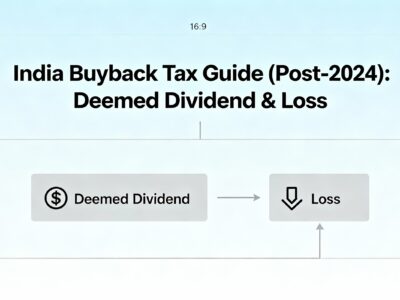Is the money you’re saving for the future secretly losing its value? The hard truth is, it probably is. This is due to a silent financial force called inflation.
In India, rising prices constantly erode the purchasing power of your savings, meaning the ₹1 crore that seems like a fortune today might not be enough for a comfortable retirement tomorrow. Planning in today’s money is one of the biggest risks to your long-term financial security.
This guide is designed to empower you against this threat. We’ll not only explain how inflation works in the Indian context but also provide you with interactive tools—like our Inflation Calculator and Step-Up SIP Calculator—to see the numbers for yourself. You will learn to calculate the true future cost of your goals, understand the necessity of earning a ‘real return’, and discover the strategic power of investing to build a truly inflation-proof financial future.
Financial Planning Series
The Indian Inflation Calculator: A Guide to Protecting and Growing Your Wealth
Inflation is the silent thief of your savings. Discover how it works, calculate its impact on your future, and learn the strategies to build a truly inflation-proof financial plan.
Part I: The Unseen Force of Inflation
The Erosion of Wealth: Understanding Purchasing Power
At its core, financial planning is about managing resources for future goals. But a silent, persistent force undermines these efforts: inflation. It's the rate at which prices rise and, consequently, the purchasing power of your money falls. The ₹1,000 in your wallet today will buy you far less in the future. This erosion is the single most underestimated threat to your long-term financial security.
The Shrinking Rupee: Visualizing Lost Purchasing Power
See how the value of ₹10,000 erodes over 30 years with 6% average inflation.
Value in Today's Terms:
₹10,000
Measuring the Invisible: The Consumer Price Index (CPI)
In India, we measure retail inflation using the Consumer Price Index (CPI). It tracks the average price of a basket of goods and services. A key feature of India's CPI is the heavy weight (45.86%) given to food and beverages, making our headline inflation very sensitive to food price changes.
What's in India's Inflation Basket? (CPI Components)
Part II: India's Inflation Landscape
India's inflation has been a rollercoaster, not a gentle slope. Relying on a single average rate for planning is risky. The chart below shows the volatility over the last three decades. Notice the peaks and troughs – a sequence of high-inflation years can be devastating for a retiree.
Interactive: Historical CPI Inflation in India (1995-2024)
Use the slider to explore inflation trends over different periods.
Part II-A: Beyond the Headlines
Your Personal Inflation Rate vs. Headline CPI
The headline CPI figure is a national average, but your personal inflation experience is dictated by your unique spending. Categories like education and healthcare have historically seen inflation far exceeding the headline rate. This means a family with high education costs or a retiree with significant medical expenses faces a much faster erosion of their wealth than the official numbers suggest.
Dissecting the Data: Component-Level Inflation
Notice how inflation in specific categories can be much higher than the overall average. This is why personalizing your inflation estimate is crucial for accurate planning.
| CPI Component | Weight in Index (%) | Illustrative YoY Inflation (%) |
|---|---|---|
| Health | 5.89 | 4.43 |
| Education | 4.46 | 4.37 |
| Transport & Communication | 8.59 | 3.90 |
| Headline CPI (All Items) | 100.00 | 2.10 |
The Guiding Hand: The RBI's Role in Taming Inflation
The Reserve Bank of India (RBI) is the primary institution tasked with keeping inflation in check. Through its Monetary Policy Committee (MPC), the RBI operates under an inflation-targeting framework. The goal is to keep headline CPI inflation within a tolerance band of 2% to 6%, with a medium-term target of 4%. The RBI's main tool is the **repo rate**—the rate at which it lends to commercial banks. By raising this rate, the RBI makes borrowing more expensive, which helps to cool down the economy and control rising prices. Understanding the RBI's stance provides crucial clues about the future direction of inflation and interest rates.
Part III: The Planner's Toolkit
How much will your future goals actually cost? Use our interactive calculators to project the real, inflation-adjusted cost of your dreams and understand the investment needed to get there.
Inflation Calculator: What Will Things Cost in the Future?
Future Cost (in 30 years):
₹5,74,349
To afford what costs ₹1,00,000 today, you will need nearly ₹5.75 lakh in 30 years.
Step-Up SIP Calculator: How to Reach Your Goal
Required Initial Monthly SIP:
₹6,270
Start with just ₹6,270 per month and increase it by 10% annually to build a ₹5 Crore corpus in 30 years at a 12% return.
Part IV: Building an Inflation-Proof Strategy
The Nominal Trap: Why a ₹1 Crore Goal Can Be Deceiving
The most common mistake in financial planning is setting goals in today's money. A target of ₹1 crore for retirement might sound impressive, but its real value shrinks dramatically over time. In 25 years, with 5% average inflation, that ₹1 crore will only have the purchasing power of about ₹29.5 lakh today. The dream of a comfortable retirement can dissolve into a reality of financial struggle if goals are not set in future, inflation-adjusted terms.
The Real Return Imperative
To grow your wealth, your investments must earn more than inflation. This is the 'real rate of return'. So-called "safe" investments like Fixed Deposits often fail this test after taxes. For long-term goals, growth assets like equities are a mathematical necessity.
| Asset Class | Avg. Nominal Return (%) | Avg. Inflation (%) | Calculated Real Return (%) |
|---|---|---|---|
| Indian Equities | 12.0 | 6.0 | 5.66 |
| Gold | 9.0 | 6.0 | 2.83 |
| Public Provident Fund (PPF) | 7.5 | 6.0 | 1.42 |
| 5-Year Bank Fixed Deposit | 6.5 | 6.0 | 0.47 |
The Full Lifecycle: Accumulation (SIP) & Distribution (SWP)
A complete financial strategy covers both how you build your wealth and how you use it in retirement.
Part A: The Accumulation Phase with a Step-Up SIP
During your working years, the goal is to build your corpus. A Step-Up Systematic Investment Plan (SIP) is the most effective tool. By starting with a manageable amount and increasing it annually (e.g., by 10%), you align your investments with your salary growth, harnessing the power of compounding to reach ambitious goals with a modest start.
Part B: The Distribution Phase with a Systematic Withdrawal Plan (SWP)
In retirement, the challenge shifts to generating a sustainable, inflation-proof income. A Systematic Withdrawal Plan (SWP) from your mutual fund corpus is the solution. You withdraw a fixed amount monthly for expenses, while the remaining corpus stays invested, continuing to grow faster than inflation. This allows you to periodically increase your withdrawals to keep pace with rising costs, ensuring your purchasing power is maintained throughout retirement.
Conclusion: From Calculation to Action
The journey to financial security requires moving beyond simple saving. It demands a strategic, data-driven investment approach. By acknowledging the threat of inflation, planning in future terms, demanding real returns, and implementing a disciplined strategy like a Step-Up SIP, you can transform from a passive saver into the architect of your long-term financial well-being.








